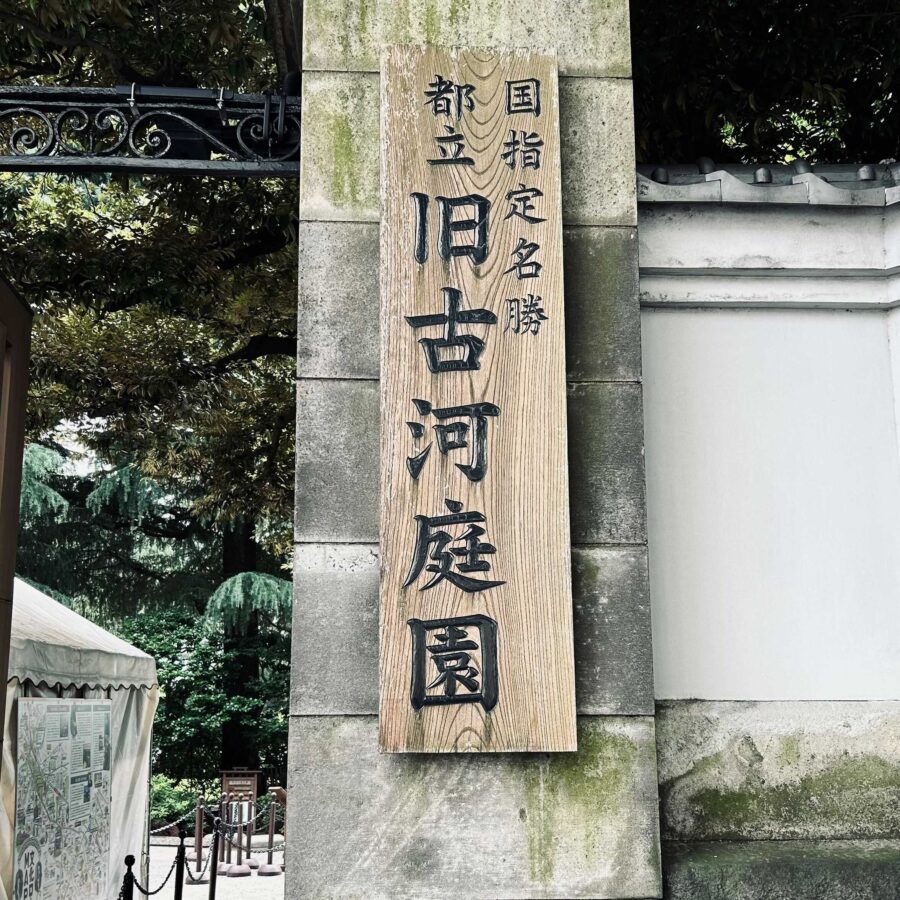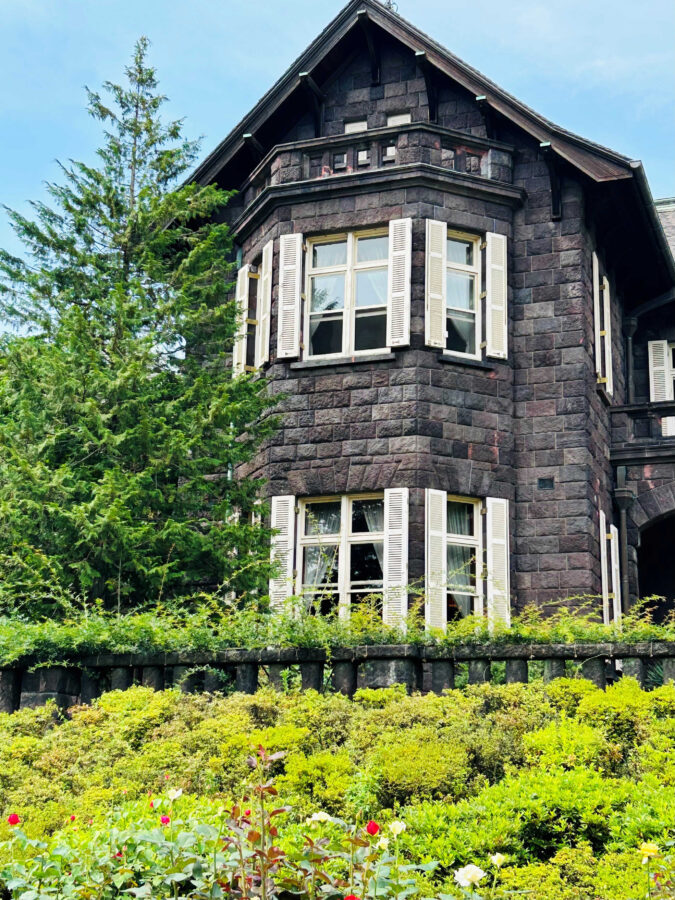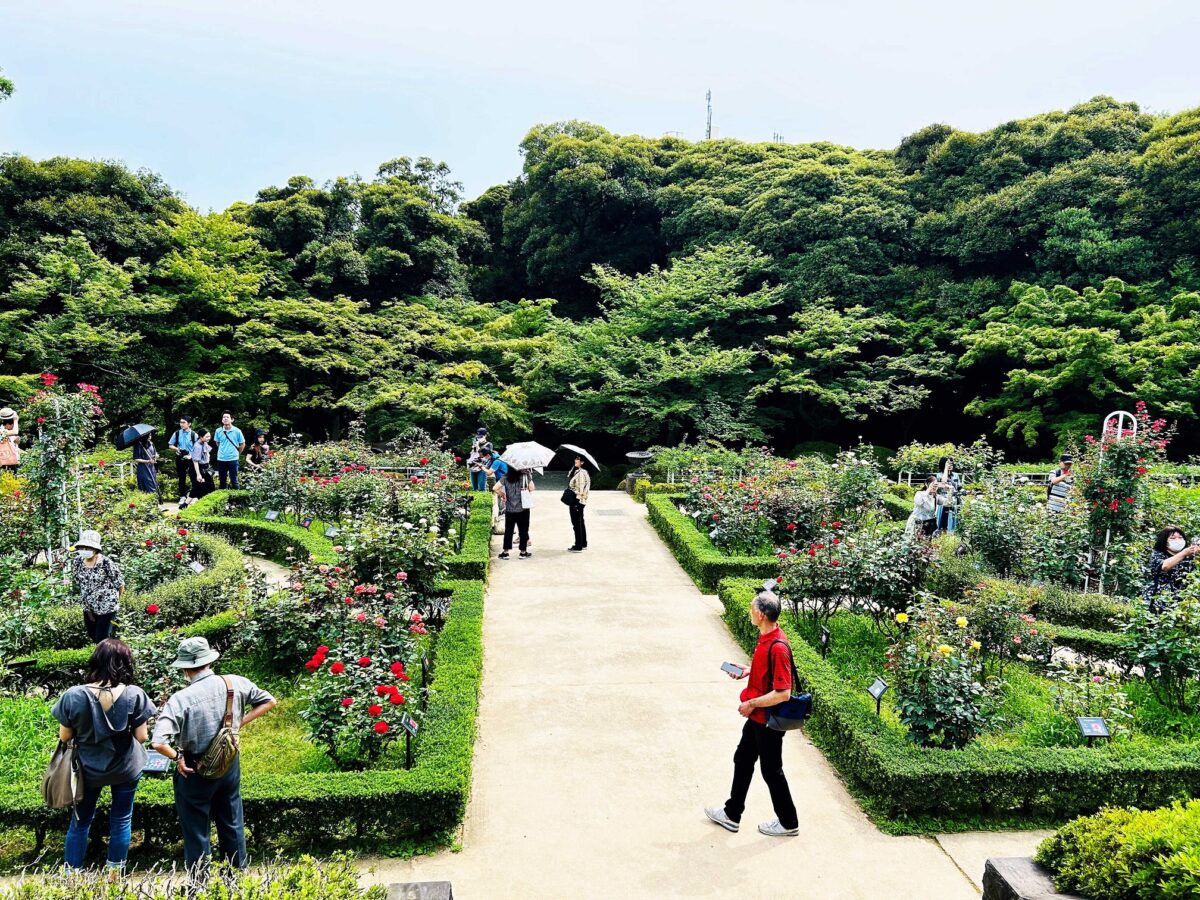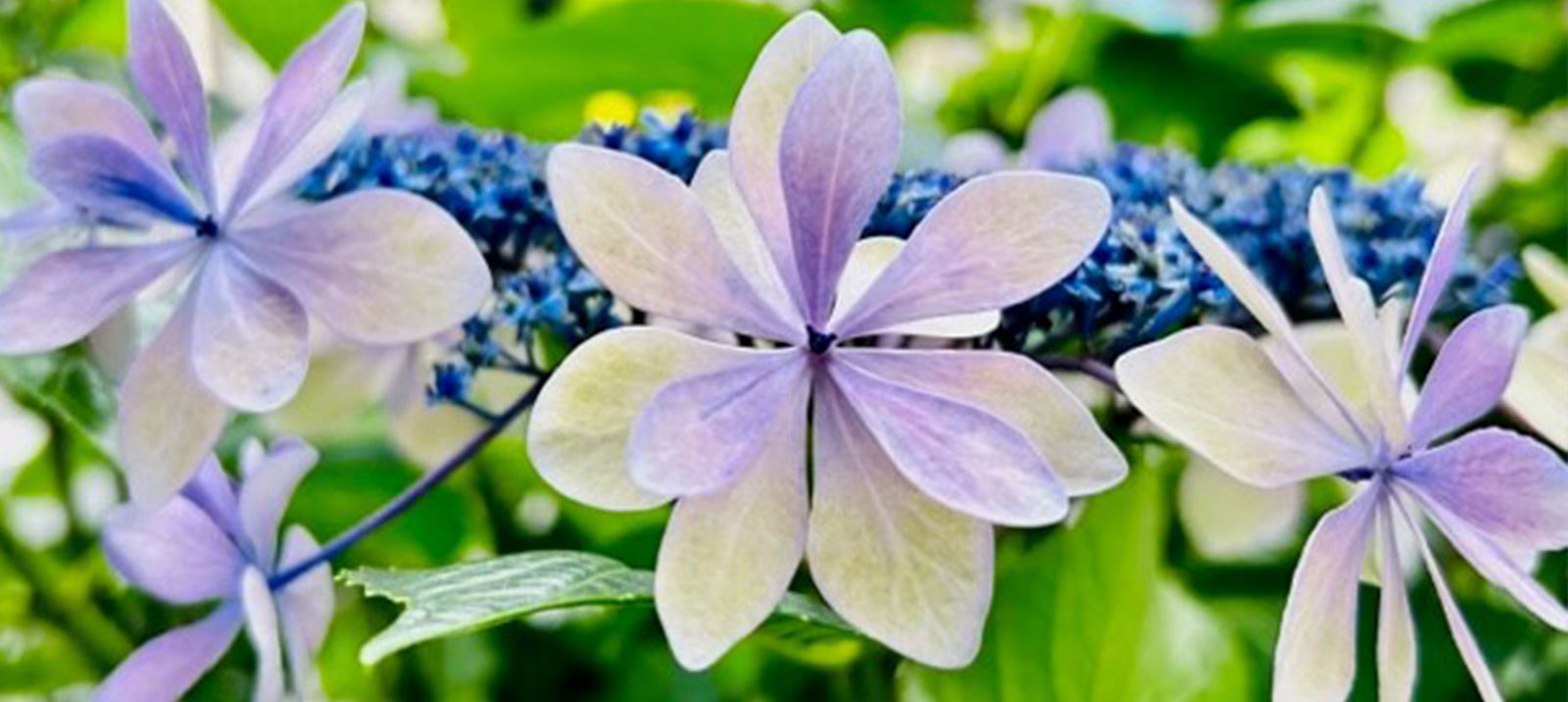One day in June, I learned that the roses were in full bloom, so I went to Komagome to visit the old Furukawa Garden.
The former Furukawa Garden is about a 10-minute walk from JR Komagome Station. On a sunny day during the rainy season, the sun is as strong as summer. On the way from the station to the garden with a parasol, a pretty forehead hydrangea was shining on the sidewalk facing the asphalt road.
At the gate of the former Furukawa Residence
It says “Nationally Designated Place of Scenic Beauty Tokyo Metropolitan Former Furukawa Garden”. By the way, Komagome also has Rokugi-en, which is also a designated place of scenic beauty, and it is crowded with people, especially during the autumn foliage season.
When I entered through the gate, I saw a stone Western-style building standing there. From there, go down the stairs to the rose garden, and further down to the Japan garden.
Although it was not possible to enter the Western-style building on that day due to time constraints, the Western-style building and Western-style garden were designed by British architect Josiah Condor, who worked on the Rokumeikan and Nikolai-do from the Meiji period to the Taisho period, and is said to have had a great influence on the architectural world of the Japan.
There is a coffee room and billiard room on the first floor, and a traditional Japanese-style room on the second floor, and the Otani Museum of Art website states that “the harmony of Japanese and Western styles is achieved with skillful composition Without a mix of Japanese and Western style (Otani Museum of Art HP)”, which is very interesting. I will take a look inside the Western-style building at a later date.
Well, the roses I was looking forward to, but unfortunately the heat caused the pain too quickly, the petals lost moisture, and there were few flowers in good condition.
What I took was the one where the flowers were in good condition.
Double Delight
1977 USA: Swim & Ellis
As the flowers open, they turn red from green. “Double pleasure” of beauty and fruity aroma. (*)
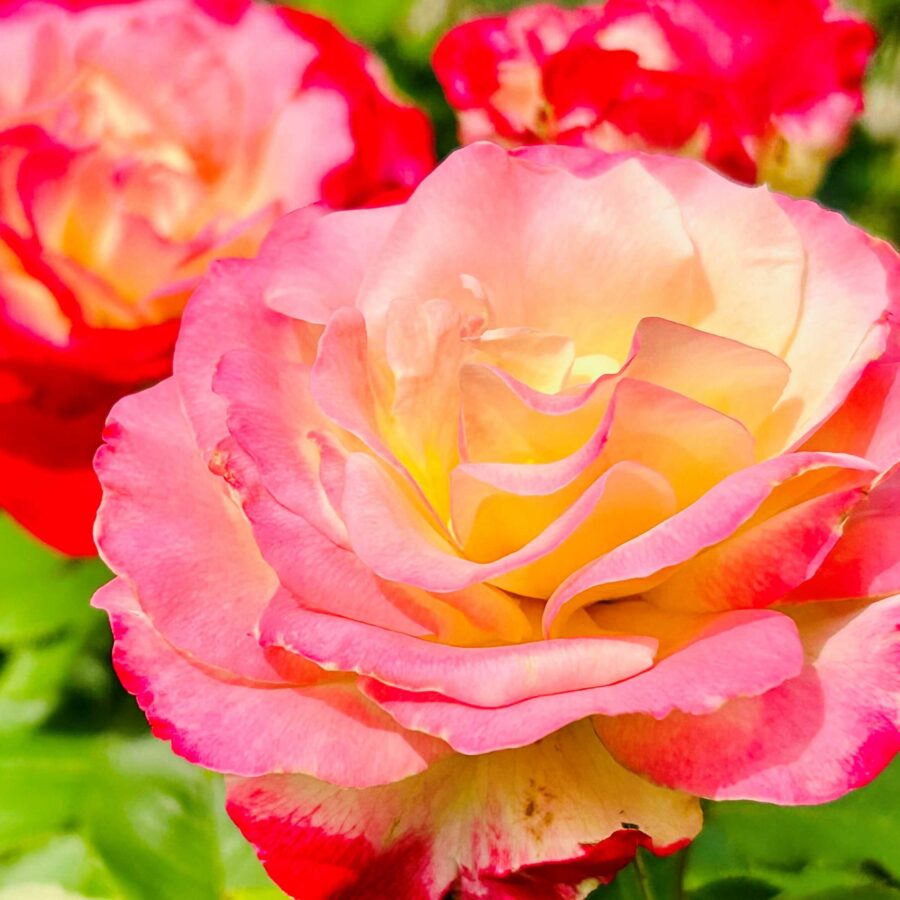
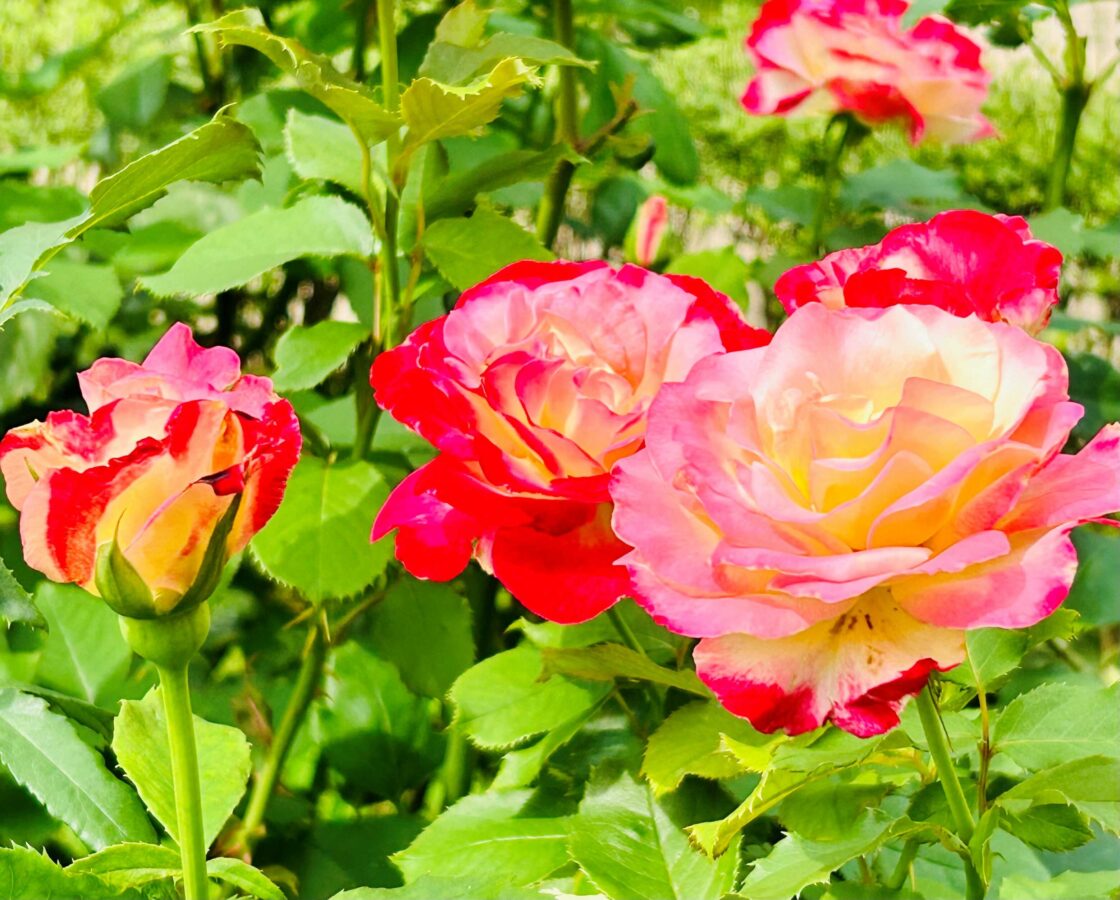
Tancho
1986 Japan: Keisei Rose Horticulture
The name comes from the fact that the red at the tip of the white petals as it blooms is reminiscent of the “Tancho” of a crane .(*)
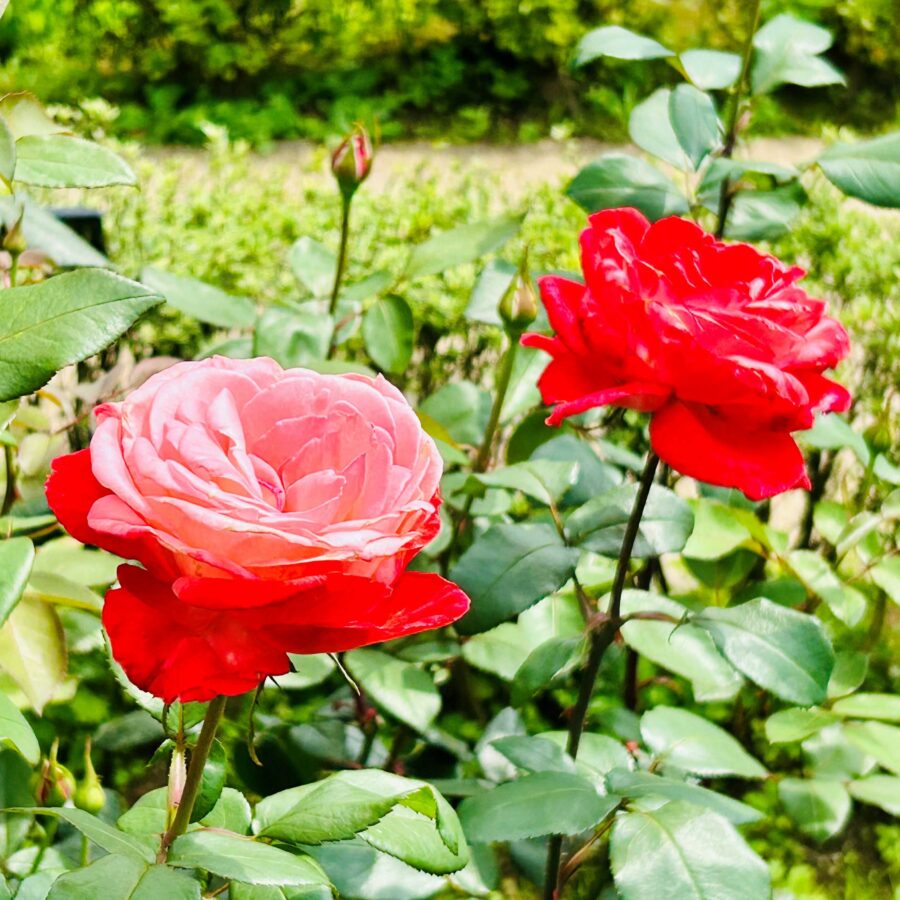
Manyo
1988 Japan: Keisei Rose Horticulture
Light apricot color with an orange tint. It is a flower with the image of the romance of Manyo. (*)
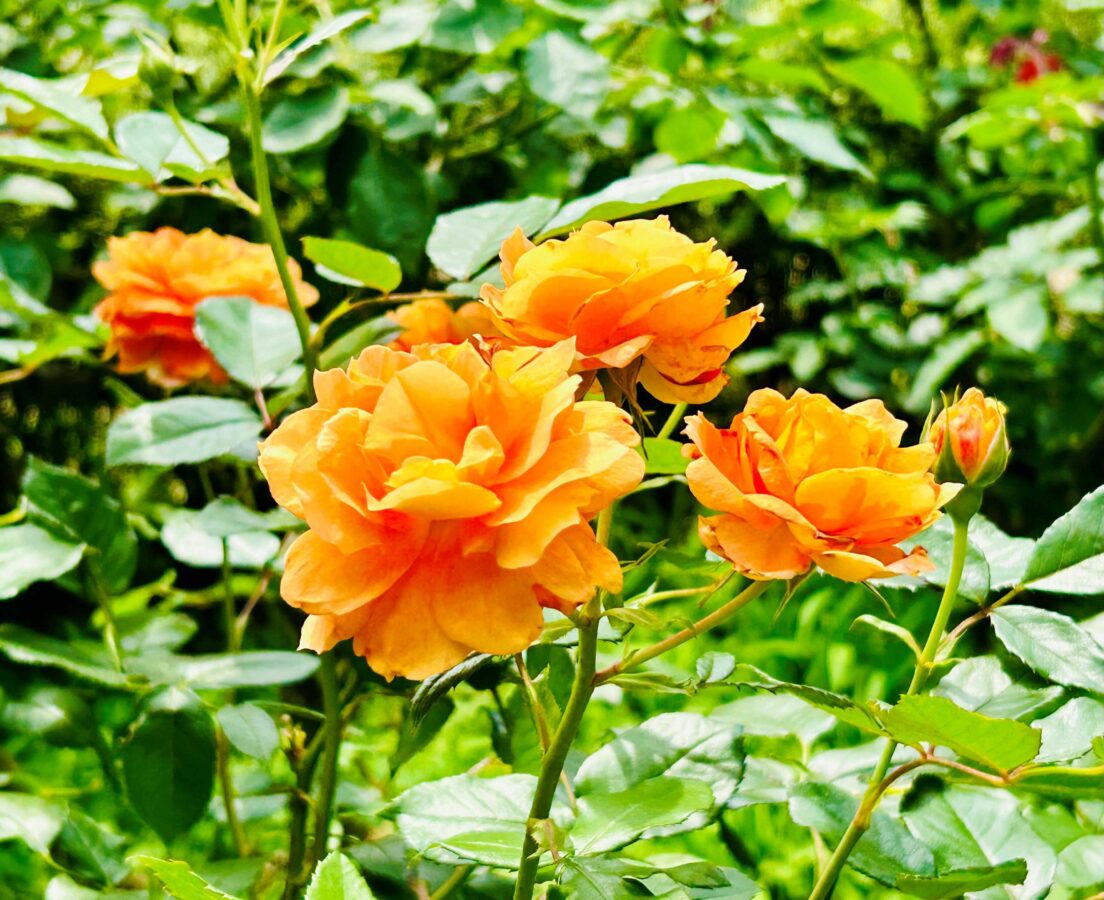
Further down the slope from the rose garden, there is a Japan garden.

The garden was designed by the seventh generation Ogawa Jihyō, and later Ueji, who is said to be a charismatic gardener of the Meiji and Taisho periods.
I have no knowledge of gardens Japan, but when I learn that Kamiharu built Maruyama Park in Kyoto and the Saionji Kobo Residence where he served as prime minister, I understand how amazing it is.
It began with the first Ogawa Jihyō, who turned from a samurai and aspired to become a gardener, and continues to this day.
Referrance:Ueji (Katsuaki Ogawa: 12th Jihei Ogawa) Oniwa Ueji Co., Ltd.|Higashiyama-ku, Kyoto (ueji.jp)
The former Furukawa Garden, together with the Western-style building, Western-style garden, and Japan garden, was very large, and only the rose garden was able to be fully admired on that day. If you are going to visit, we recommend that you do your homework in guidebooks and other means to see the sights.
When I think of places of scenic beauty, I think of Kenrokuen Garden in Ishikawa and many gardens in Kyoto, but I learned that there are more than 10 gardens in Tokyo that have been designated as places of scenic beauty. “The garden next door is blue” and people tend to yearn for the garden in the distance, but the garden in Tokyo is also quite quaint and worth a walk.
Also, in autumn, when the roses and autumn leaves are beautiful, I would like to prepare plenty of time to visit. Don’t forget to visit the Western-style building.
Referrance:Kyu Furukawa Tei | Otani Museum of Art (otanimuseum.or.jp)
(*)The explanation of the rose is taken from the description in the former Furukawa Garden.


